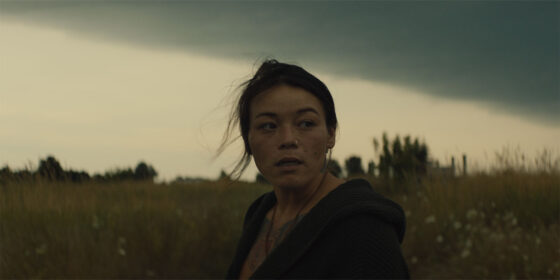TIFF 2023 | Boil Alert (James Burns, Stevie Salas, Canada) — TIFF Docs

By Madeleine Wall
Documentary filmmakers James Burns and Stevie Salas, who previously worked together on The Water Walker (2020), have again turned their camera to an Indigenous environmental activist. Serving as both audience and director proxies, Haudenosaunee activist Layla Staats is the structuring force of Boil Alert; her hero’s journey is to learn about the environmental disasters that multiple Indigenous communities must live in. Through dramatic re-enactments and dream sequences we learn that Staats has always struggled to belong, and to find her place she must learn about water and the fundamental need to protect it.
Staats visits three Indigenous communities which have dealt with man-made environmental disasters: the Oji-Cree nation of Neskantaga, whose water has been under boil alert since 1995; the Navajo nation at Church Rock, the site of the largest uranium spill in North America; and Ojibwe nation of Grassy Narrows, who were exposed to mercury poisoned waters for decades. Juxtaposing drone shots with interviews of community members, Boil Alert focuses on Indigenous perspectives without simplifying the multifaceted nature of the issues at hand; it demonstrates that the damage from decades of poisoning is not only physical but cultural.
There is a long afterlife to disaster, and the damages are passed on by each generation. In Canada especially, state, industry, and land extraction are all the same, and the natural resources of these communities become sites of plunder, and the people who live there an afterthought. When interviewed, the subjects repeat variations of “it’s like we don’t matter.” They cannot wait for the government or industry to save them from becoming statistics; Boil Alert film makes it clear that direct action is the only solution.
As Staats reflects on what she has seen, and struggles with her responsibility to her children, she is called to the Wet’suwet’en nation as a land defender. She joins the protests, and is brutally attacked by police who remain completely indifferent to the cameras. In these sequences it is hard not to see formal and dramatic echoes of Alanis Obomsawim’s Kanehsatake: 270 Years of Resistance (1993)—these are the same struggles, the same battles that have been happening since colonizers arrived on this continent. “We will never not be here” the Wet’suwet’en chief announces. As Staats finds a way to both be an activist and present for her children, we understand that the resistance, in its many forms, continues.
Madeleine Wall- « Previous
- 1
- 2


